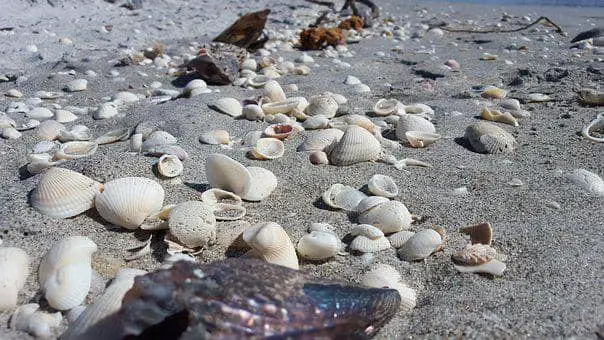Pearl farming in India is gaining popularity day by day and farmers must try this profitable cultivation at least once.
What is pearl farming
Pearl meaning in Hindi is moti therefore this farming is also known as moti farming in India. Pearl farming is a type of aquaculture farming and these pearls are found inside oysters. Farming is totally based on water and it is done on seawater, pond water or collected water.
Oyster pearl farming in India
Pearls have huge demand in the local and international markets. Slowly but steadily cultivation is becoming one of the most demanding aquaculture businesses in India. The good thing about this farming is you can start a farm with other fish farming.
However, commercial farming can give you huge profits by practising ideal aquaculture practices but it needs good investment due to the required equipment. First-year investment in commercial cultivation will be more due to farm setup and installation. You can start performing in less than a 1-acre area or you can go with a 1-acre farming modal. Pearl farming cost is approximately Rs 4 lakh to 5 lahks on a 1-acre land.
By performing ideal aquaculture management practices one can produce around 60% profit from this agribusiness. However, the profit may increase up to 90 to 100 per cent with more care and management.
Project Report Analysis
| Area = half acre Stocking density = 9000 to 10,000 mussels Mussel holding tank cost = Rs 42,000 Bamboo and rope cost = Rs 45,000 Cultured pond lease amount = Rs 20,000 Mussel surgical set cost = Rs 23,500 Cost of mussel in pond = Rs 12,000 Pearl nuclei cost = Rs 1,05,000 Skilled workers cost = Rs 50,000 Pond liming fertilizer cost = Rs 30,000 Pearl harvesting and processing cost = Rs 55,000 Total cost = Rs 382500 Pearl farming Profit Total pearls collected = 40,000 (after 20% damage) Pearls are classified in two grades A and B grade. A grade price = Rs 150 and B grade price = Rs 70 A grade pearl sale = 10 % of total pearls (40k pearls) A grade = 40,000 x 10/100 = 4000 A grade = 4000 x Rs 150 = Rs 600000 B grade pearl sale = 20 % of total pearl (40k pearl) B grade = 40,000 x 20/100 = 8000 B grade = 8000 x Rs 70 = Rs 5,60,000 Total Profit = Rs 6,00000 (A grade) + Rs 5,60,000 (B grade) Total Profit = Rs 11,60,000 Net profit = Pearl farming profit – Pearl farming cost Net Profit = Rs 11,60,000 – Rs 382500 Net Prfoit = Rs 777500 Note – This is the assumption of the project report. Prices may vary according to the location, availability, market and variety. If you need pearl farming project report pdf please comment below without any hesitation. |
Important species used in India
Lamellidens marginalis, corrinaus, parreysia corrugata
Varieties
There are mainly three types of pearls in India. These types are given below:
Natural, Artificial and Cultured pearls.
Natural pearls – As the name suggests ‘Natural’ these types of pearls are original in shape.
Artificial pearls – These pearls are artificially made and coated with a synthetic body.
Cultured pearls – pearl culture project is beneficial and culture farming is done in freshwaters such as ponds, rivers and seas. The desired shape of pearls can be achieved in this type.
Other types
Natural, freshwater cultured pearls, Keshi pearls, Japanese cultured pearls, mabe, and saltwater cultured pearls.
Other names
Moti in hindi
Moti, muttu – kannada
Mukta – Oriya
Moti – Konkani
Moti – Gujarati
How to start pearl farming

Select a location free from predators, floods and threats.
The selection of a secured and safe site should be preferred to avoid losses.
In order to produce profit farming demands dedication, proper time and investment.
A sufficient amount of oysters should be achieved.
You should learn the grafting techniques in pearl culture. Grafting skills are required in commercial pearl culture projects.
You should prepare a proper farming business plan so that you can find buyers.
Marketing is necessary to sell pearls on a larger scale.
You can create your online store through Shopify, or Dukan store and you can also use Facebook (meta) marketplace option to sell your products.
By creating an e-commerce website for a particular product one can boost the sale.
Pearl farming subsidy in India Rajasthan
Rajasthan Government is giving a 50% subsidy on pearl farming in Rajasthan. Not only state governments but also the Central government used to give 50% subsidy for the cultivation.
How to apply for pearl subsidy in Rajasthan
Applicants should apply at the Raj Kisan Saathi portal. This is a single-window-oriented platform where farmers get all the benefits in one place.
FAQ
How to get desired pearl shape?
One can produce round, half round and designer shapes by inserting a nucleus in the mussels along with some solutions. The nucleus is made up of dead muscle shells.
What is the chemical composition of pearl?
82 to 85 % aragonite calcium carbonate, 10 to 13 % organic matrix and 2 to 5 % of water.
How long does it take to culture a pearl?
16 to 18 months are required for this period.
Where is pearl farming training institute in India?
Pearl farming training fees in India are a bit higher due to fewer training centres. The training centres in Rajasthan is given below:
(1) Vijay Nagar, Alwar, Rajasthan
(2) Pratap Nagar housing board, Sagner, Jaipur, Rajasthan, India
Is the pearl farming business profitable?
Yes, it is a profitable business if practised professionally. Farmers can earn Rs 7 lakh to Rs 8 lakh in this business.
You can share this information with your friends and families through social media. Feel free to ask any queries.
Read More